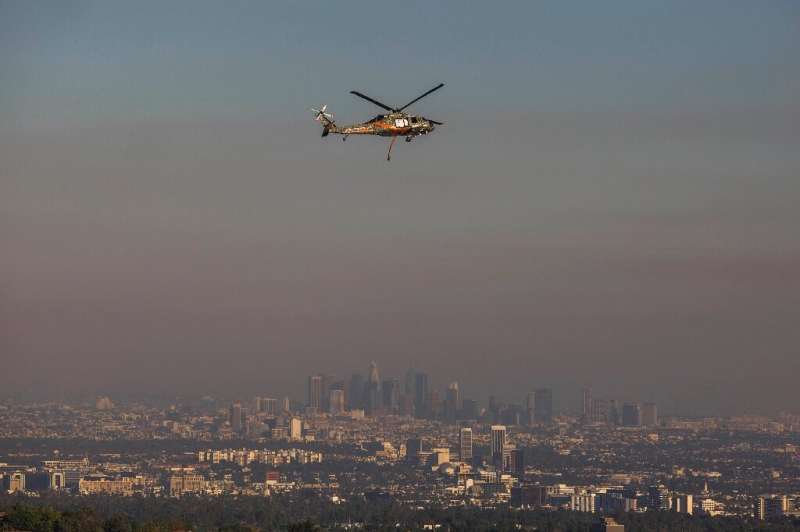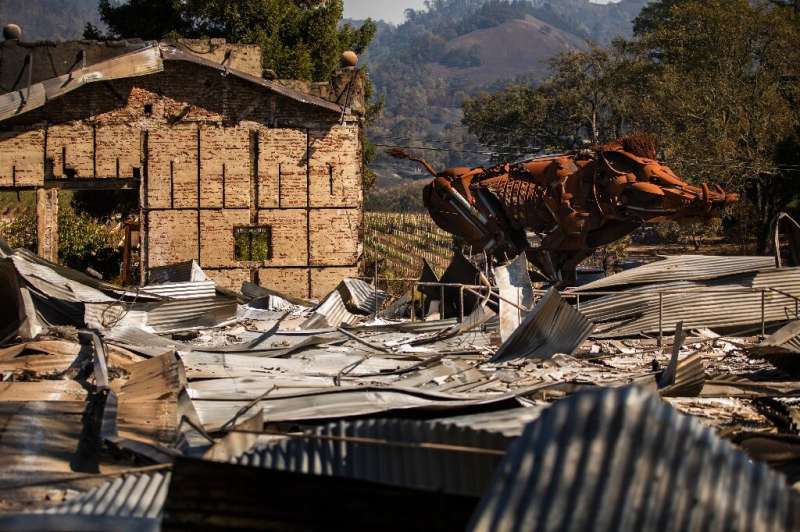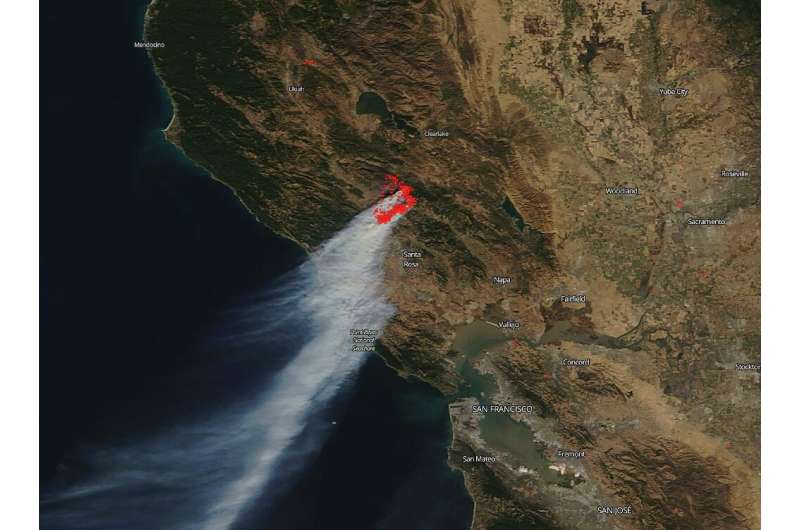A rescue helicopter flies over Brentwood while the Los Angeles skyline is seen behind smoke from the Getty Fire
Fire crews battled to contain two major blazes in California on Tuesday as authorities warned that winds with dangerous gusts of up to 70 miles per hour threaten further havoc.
The National Weather Service issued a 24-hour wind advisory beginning from noon Tuesday for the northern part of California, where more than 4,500 firefighters have been deployed to fight the Kincade Fire—the largest in the state this year.
Farther south, where a fire near the Getty Center west of downtown Los Angeles has forced evacuations in upscale neighborhoods, the weather service warned of "extremely critical fire weather" beginning late Tuesday.
"This Santa Ana wind event will likely be the strongest we have seen so far this season," the weather service said, referring to dangerous winds that kick up in southern California every year.
"These strong winds combined with a long duration of single-digit humidities and dry fuels will likely bring very critical fire weather conditions, making this an extreme red flag warning event."
Los Angeles Mayor Eric Garcetti said that the more than 7,000 residents evacuated in the wake of the Getty Fire, which erupted Monday and has burned at least eight homes, should not plan on returning until conditions are safe.
"Our goal today is to increase containment as much as possible," Los Angeles Fire Department Chief Ralph Terrazas told a news conference. He said the fire has scorched 656 acres and was five percent contained as of early Tuesday.
"Lord Snort," a steel sculpture of a boar, is seen amid the rubble after the Soda Rock Winery was lost in the Kincade Fire in Healdsburg, California
'Takes one ember'
"It only takes one ember to blow downwind and start another fire," Terrazas said. "Embers have been known to travel several miles, so we are very concerned about tonight's wind event."
The critical weather warnings came just days after Governor Gavin Newsom declared a statewide emergency because of the fires.
California's largest utility, Pacific Gas & Electric, has meanwhile been imposing rolling blackouts in the northern and central part of the state that have affected millions of people in a bid to reduce the risk of fire.
The company, which said that one of its transmission lines had malfunctioned near the origin of the Kincade Fire, north of San Francisco, announced on Tuesday that it was cutting power to nearly 60,000 customers as a precaution.
The Kincade Fire erupted last Wednesday, prompting the evacuation of nearly 200,000 people and destroying dozens of homes and wineries in the famed Sonoma region.
A photo from NASA's Terra satellite shows the smoke plume cascading down the coast from California's devastating Kincaid Fire in Sonoma County
Authorities said they don't expect to contain the fire—which has grown to 118 square miles—before November 7, after which it could still smolder for weeks.
At least a dozen other fires have broken out throughout the state in the last eight days, fed by strong winds, low humidity and high temperatures.
The wildfires come as California is still reeling from the aftermath of the most destructive wildfire in state history—the Camp Fire, which destroyed the town of Paradise and killed 86 people.
Similar blazes in northern California, including in the Napa and Sonoma wine regions, killed 44 people in 2017 and destroyed thousands of structures.
Fire authorities determined that PG&E transmission lines caused the Camp Fire. The utility, which filed for bankruptcy earlier this year, has been held responsible for a number of other wildfires in recent years.
© 2019 AFP


























